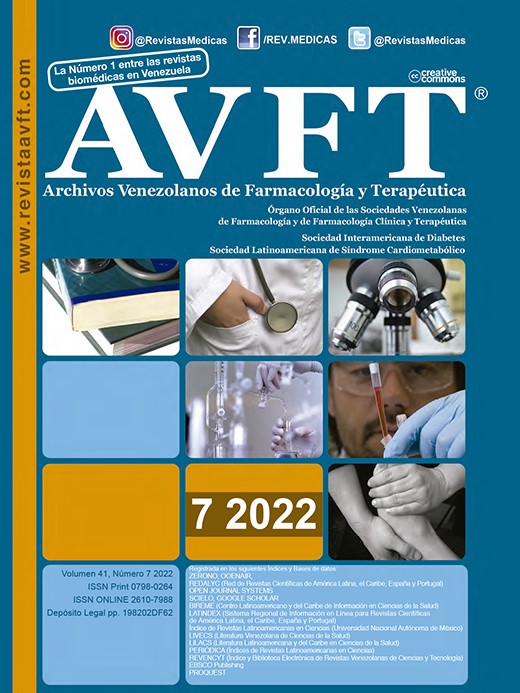Study of the etiology, pathogenesis, and diagnosis of dermatomycosis of the scalp, nails, feet, hands, smooth skin, and inguinal dermatophytosis
Keywords:
dermatomycosis, etiology, pathogenesis, antifungal drugsAbstract
Introduction: The increased incidence and preponderance of dermatomycosis cause the issue of determining antimycotic agents of systemic and external action to be particularly pertinent, considering the etiology, clinical form, and majority of mycoses, the sensitivity of pathogens to them, and the existence of concurrent conditions. The study aims to analyze the etiology, pathogenesis, and diagnosis of dermatomycosis of the scalp, nails, feet, hands, smooth skin, and inguinal dermatophytosis. Patients and methods: To meet the aim of the study, it is attempted to generate an algorithm for pharmaceutical counseling of patients suffering from various types of dermatomycosis. Over the span of five months, a survey was carried out of 25 visitors to the pharmacy with a diagnosis of dermatomycosis. Results: Based on the results, it was revealed that most of the visitors suffer from dermatomycosis of the feet - 10 people (40%), the second in terms of incidence is onychomycosis - 5 people (19%), the third in terms of incidence is dermatomycosis of the groin area - 4 people (15%), the fourth in the incidence is dermatomycosis of the scalp - 4 people (14%). Conclusion: To treat different types of dermatomycosis, various antifungal drugs in different dosage forms can be used. For each type of disease, a specific course of treatment is selected. The duration of the course of treatment depends on the skin lesion area, the duration of the disease, and the presence of complications.
Downloads
References
Sharma A, Gupta S. Protective manifestation of herbonanoceuticals as antifungals: A possible drug candidate for dermatophytic infection. Health Science Reports. 2022 Sep;5(5):e775.
Parveen N, Mohsin M, Azmat J. Dermatophytosis with Reference to Unani and Modern Concept: An Overview. Journal of Integrated Community Health (ISSN 2319-9113). 2019 Jun 21;8(1):1-7.
Akhmedova S. Performance results of the improved working classification of superficial mycoses of the skin in carrying out their clinical and epidemiological monitoring. Медичні перспективи. 2021;26(2):160-6.
Parveen N, Mohsin M, Azmat J. Dermatophytosis with Reference to Unani and Modern Concept: An Overview. Journal of Integrated Community Health (ISSN 2319-9113). 2019 Jun 21;8(1):1-7.
Prohic, A., Doss, N., Hay, R. J., Diallo, M., & Gupta, A. K. (2022). Fungal skin infections (mycology). Atlas of Dermatology, Dermatopathology and Venereology: Cutaneous Infectious and Neoplastic Conditions and Procedural Dermatology, 77-111.
Sangeetha, K. (2018). Clinico epidemiological, mycological and therapeutic study of dermatophytosis in hundred new patients (Doctoral dissertation, Madras Medical College, Chennai).
Ganaie HA, Wani MA. Candidiasis and Dermatophytosis: Infections and Their Prevention. InFungal Diseases in Animals 2021 (pp. 35-47). Springer, Cham.
Jartarkar SR, Patil A, Goldust Y, Cockerell CJ, Schwartz RA, Grabbe S, Goldust M. Pathogenesis, Immunology and Management of Dermatophytosis. Journal of Fungi. 2021 Dec 31;8(1):39.
Hayette MP, Sacheli R. Unusual Dermatophytosis Presentations and New Emerging Dermatophytes Species. InDermatophytes and Dermatophytoses 2021 (pp. 87-114). Springer, Cham.
Gnat S, Nowakiewicz A, Łagowski D, Zięba P. Host-and pathogen-dependent susceptibility and predisposition to dermatophytosis. Journal of Medical Microbiology. 2019 Jun 1;68(6):823-36.
Osman M, Kasir D, Rafei R, Kassem II, Ismail MB, El Omari K, Dabboussi F, Cazer C, Papon N, Bouchara JP, Hamze M. Trends in the epidemiology of dermatophytosis in the Middle East and North Africa region. International journal of dermatology. 2021 Nov 12.
Pippi B, Joaquim AR, Lopes W, Machado GR, Bergamo VZ, Giuliani LM, Abegg MA, Cruz L, Vainstein MH, Fuentefria AM, de Andrade SF. 8‐Hydroxyquinoline‐5‐sulfonamides are promising antifungal candidates for the topical treatment of dermatomycosis. Journal of Applied Microbiology. 2020 Apr;128(4):1038-49.
Đorđevski N, Stojković D, Živković J, Pljevljakušić D, Ristanović E, Nikolić B, Ćirić A. Tamjanika, a Balkan native variety of Vitis vinifera L.: Chemical characterization, antibacterial, and anti‐dermatomycosis potential of seed oil. Food Science & Nutrition. 2022 Feb 11.
Trave I, Cozzani E, Canepa P, Verdiani S, Parodi A. Real‐life applicability of the Euroarray dermatomycosis kit in the diagnosis of onychomycosis. Mycoses. 2021 Nov 29.
Flórez-Muñoz SV, Gómez-Velásquez JC, Loaiza-Díaz N, Soares C, Santos C, Lima N, Mesa-Arango AC. ITS rDNA gene analysis versus MALDI-TOF MS for identification of Neoscytalidium dimidiatum isolated from onychomycosis and dermat
Downloads
Published
How to Cite
Issue
Section
License
Copyright (c) 2023 AVFT – Archivos Venezolanos de Farmacología y Terapéutica

This work is licensed under a Creative Commons Attribution-NonCommercial-NoDerivatives 4.0 International License.




